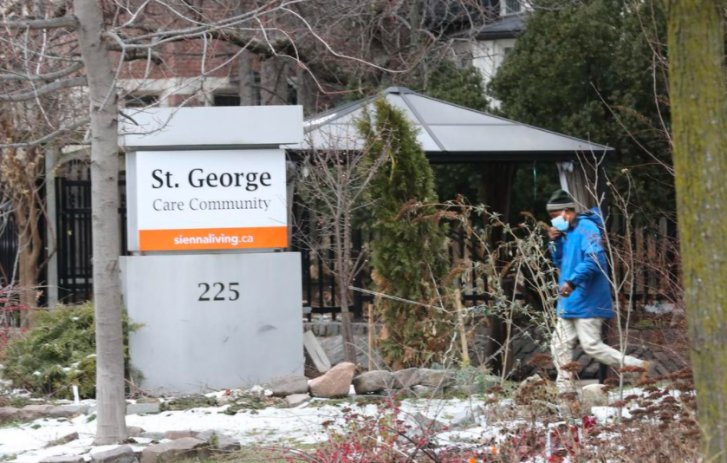Residents and workers in Canada’s long-term-care system have been harmed by the COVID-19 pandemic — and those who are racialized and from immigrant communities likely have been affected most, a new report says.
But the lack of demographic data on what these groups face in long-term care makes it difficult to pinpoint how they’ve been impacted, and what their needs are, according to physicians and researchers who authored the report, published Thursday by the Wellesley Institute and the National Institute on Aging.

“Without data we couldn’t look at the impact of COVID-19 in long-term care,” said Seong-gee Um, a researcher at the Wellesley Institute, a Toronto-based research and policy non-profit organization. “We know there are great disparities in terms of access to long-term care and health outcomes among diverse senior population groups, especially in the GTA.”
Without information on who is living in long-term care, what socio-economic factors they are facing and what their needs are, it’s hard to know how to improve conditions, the report explains.
“The pandemic impact has exposed the inequities experienced in our society, that has signalled that this is the right time” to collect data, she said.
There are few long-term-care homes in the province that cater to specific racial groups or those with a specific gender identity or sexuality, according to previous research from the Wellesley Institute, which the Star reported on earlier this year. Those homes, mostly concentrated in the GTA, have a disproportionately higher wait time. For instances, homes specifically for Chinese Canadians have an estimated wait time of two to four years, and many people wait even longer.
Building a long-term-care system that caters to multiple groups is crucial for ensuring older people receive the best possible treatment, especially when it’s usually the most vulnerable seniors that end up in these homes, said Um.
Um said for residents that do not speak English as a first language and may have dementia, COVID-induced isolation has likely been worse, and may have exacerbated their symptoms.
Data from the Ontario Long Term Care Association shows that 64 per cent of nursing home residents in 2019 were diagnosed with dementia; 90 per cent had some form of cognitive impairment.
“Losing their essential supports from family, it means they didn’t have support to communicate their needs to support workers if they aren’t placed in a home where they provide language supports,” said Um. “Not many people are lucky enough to have that kind of environment.”
A Statistics Canada report in June explained that little data has been collected about long-term care nationally, despite half a million Canadians living in those settings. By March this year, deaths in long-term care from COVID-19 accounted for 50 per cent of the country’s total deaths, as the residents often have complex health conditions and live in close contact with others, which made them more susceptible to the illness, the report stated.
COVID’s massive impact on Canada’s long-term-care system further exposed cracks that were already present. The deaths and cases in the homes led the federal government to say it’s planning to approach provinces on national standards around long-term care, and several health organizations are beginning to form new standards they plan to introduce in the system.
Even though researchers have been discussing the issue of culturally relevant services in long-term care well before the pandemic, the environment is now primed for change and they are hopeful calls for deeper data collection will be heard, said Um.
Dr. Samir Sinha, director of health policy research at the National Institute on Aging, said better care can only be created when you understand and know the people you are serving.
“If it’s a home that’s serving Indigenous people for example, there may be residential school survivors,” he said. “And do the staff have the appropriate training and support to identify issues that exist among residential school survivors?” he said. “It’s understanding that cultural context of the community we might be serving.”
Sinha, who co-authored the report with Um and others, is also leading the Health Standards Organization committee in its research on improving long-term-care homes.
Canada has a poor reputation for long-term care and historically is behind in collecting sociodemographic data, and this is a chance to improve that and the long-term-care system, he said.
“When we’re talking about developing new national long-term-care standards … you can’t make improvements unless you’re actually measuring.”
Article From: Toronto Star
Author: Olivia Bowden

